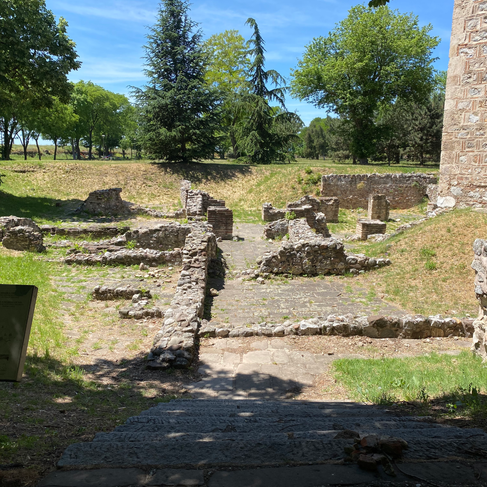Day 14: Nice to Niš You
- Katherine Kaczmarski
- May 21, 2022
- 2 min read
Updated: Sep 12, 2022
5/20/22
Wow, it's hard to believe I'm already two weeks through my trip. You know how the saying goes! Time flies...
Keep reading for the juicy history of this town.

Like I mentioned yesterday, we arrived in the southern city of Niš (pronounced "niche"). Today, we saw the city. Niš has a population of 300,000, so it feels just large enough. Here's a map for a better idea of where!
The University of Niš gave us a warm welcome. We got to learn about their university process, which has a nationally recognized student parliament which has large autonomy over the management of the university.

Today was the graduation of the highschool students, and they danced to celebrate in the town center! This very same day and time, every major city in Europe's highschool grads were doing the same thing! I am told it is an EU event. It looks like a lot of fun, and a very special day today!

The Nišava River, with restaurants on the side much like the Seine in Paris.

A good boy. Lots of sweet stray dogs

Niš is the birthplace of Emperor Constantine the Great, the first Christian Roman Emperor as well as the founder of Constantinople.
In Roman times, the city was known as Naissus. The name Niš comes from Nisus, an old Celtic word meaning "city of a fairy." They believed the river that ran through the city to be protected by a fairy, and all the names after that came from this placename.

Niš is most famous for its fortress, located right at the center of town.
It has turned into a center of culture and a public park for the people of Niš! There are restaurants, museums and walking paths within.
Most importantly within the fortress, there is a plethora of Ottoman, Byzantine and Roman ruins, layer after layer built on top of each other. However, each group re-used materials they found from the last inhabitants to build their new structures! The Ottomans used stones from this Roman marketplace street to build the mosque above it.
Bottom left: The top of a Roman building pokes out from the hill. The Ottomans used this opening to dig a tunnel into the fortress and defeat the Serbs.
Bottom right: the front of the mosque, which is now an art gallery for the college students. The minaret was removed during occupation uprisings.
Another particularly gruesome remnant of the Ottoman occupation is Skull Tower.
After a Serb rebellion and a kamikaze tactic that killed the Serbian soldiers in order to kill 14,000 Ottoman soldiers, the Ottoman commander was furious. He enslaved tailors to cut off the heads, scalp and stuff with straw the heads of the Serbian soldiers to send to the Sultan to prove he suppressed the insurrection, and then he ordered their 952 skulls to be made into a concrete wall. Today, only 58 remain! This is because even from the beginning, the wives and children and survivors would sneak to the wet concrete at night and bury the skulls, thinking they were one of their own.

Then we had a nice dinner, and got some sleep to prepare for another early morning. Tomorrow we are off to Kosovo.
Ćao for now!
Katherine
























Comments